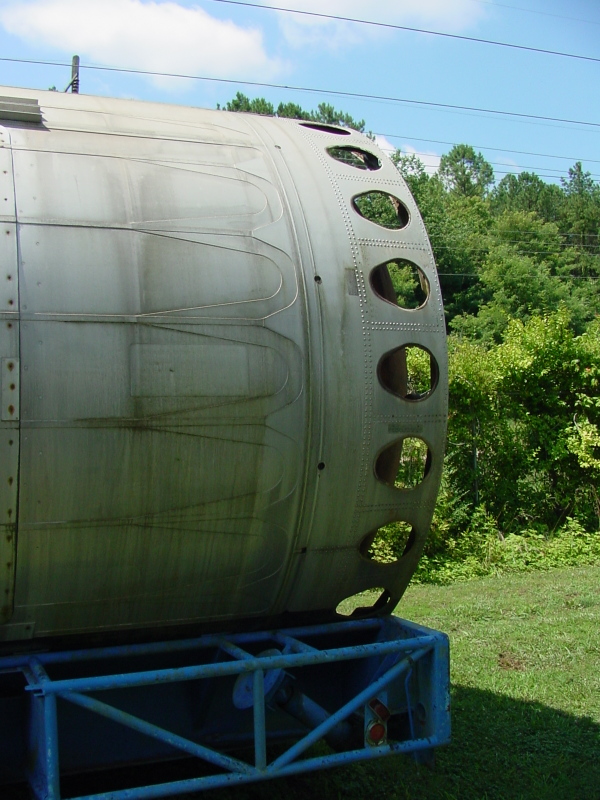| Prev |
heroicrelics.org U.S. Space & Rocket Center Site Index Titan II Gallery |
Next |
dsc06754.jpg
View of the forward end of the first stage.
The teardrop-shaped holes are blast ports: To minimize the amount of time that the missile was unpowered (and therefore potentially unstable), the second stage began firing while it was still attached to the first stage (referred to as "fire-in-the-hole" staging). These ports allow the second stage engine exhaust to vent.
This can be seen in this YouTube video.

| Time picture taken | Sat Jun 19 10:58:46 2004 |
| Location picture taken |
Rocket Park U.S. Space & Rocket Center Huntsville, AL |
| Prev |
heroicrelics.org U.S. Space & Rocket Center Site Index Titan II Gallery |
Next |